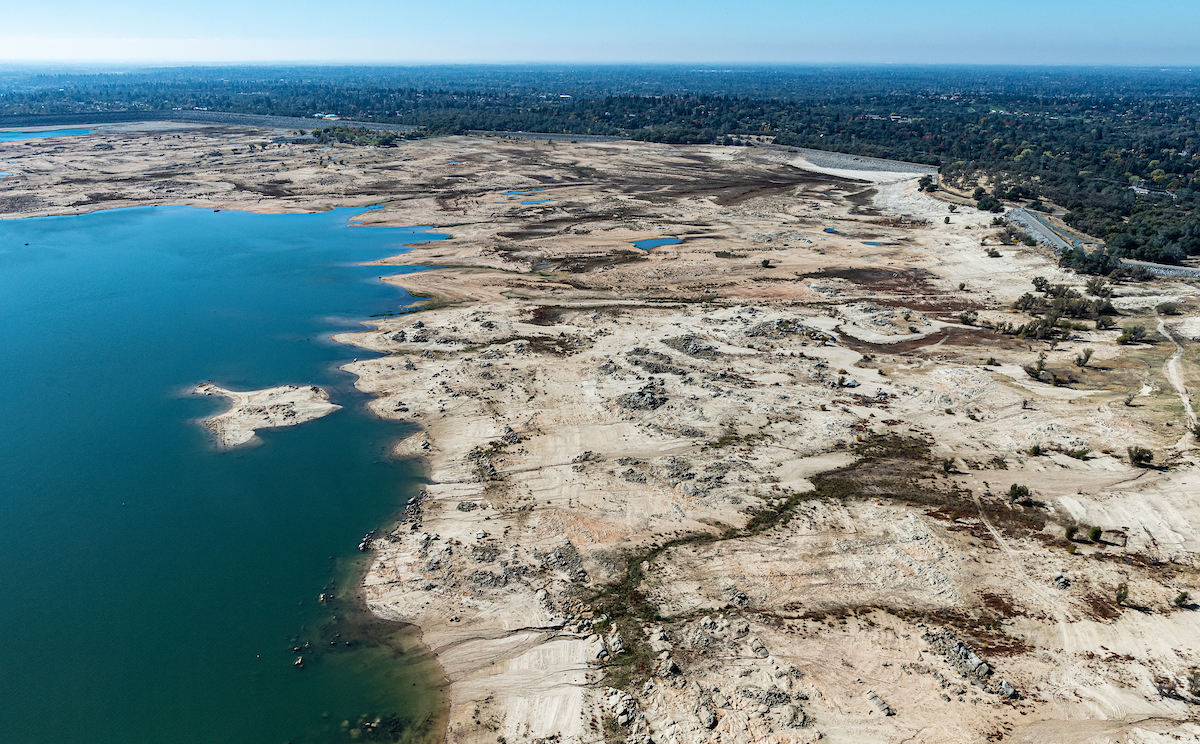It’s been over a month since the last AR storms rolled through California. Since then, the State has seen scattered precipitation. During November, Folsom Reservoir received about 0.91 inches of precipitation, Trinity Reservoir received 2.3 inches, New Melones received 0.82 inches, Millerton 0.48 inches, and Shasta Reservoir, some 5.43 inches.
Year-to-date precipitation totals still remain significantly above average across northern CVP reservoirs (e.g., 179, 148, and 137% of average for the gages at Blue Canyon in the American River basin, Shasta Dam, and New Melones Dam, respectively). Interestingly, precipitation totals for Blue Canyon and Shasta Dam are still above the totals recorded by this same date during 1983, the wettest year on record.
Reservoir operators have been appropriately cautious given current low storage levels and the low probability of notable storms developing over the State in the near- to intermediate future. Sacramento River releases through Keswick Dam has been consistently around 3,300 cfs for the month, while the lower American River through Folsom/Nimbus dams have had their releases hovering close to their minimum, at slightly above 550 cfs. Oroville Reservoir was being held constant at 950 cfs for much of the month and has only recently been increased to 1,300 cfs.
Currently, north CVP reservoir storage stands at 3.115 MAF or approximately 57% of the 15-year average. This is well below last year’s total system storage on this same date by almost 2.4 MAF. Insofar as total capacity, current north CVP reservoirs are only a little over 27% full. But as we’ve noted many times previously, total raw storage, while a useful metric to some, must be tempered by the existence of a reservoir’s operating rule curve which always necessitates wet-season empty-space requirements. Raw storage, therefore, is relative, and must be viewed within allowable reservoir storage limits.
Folsom Reservoir, owing largely to its small size, is the only CVP reservoir currently at its average 15-year storage level for this date. The two large northern CVP reservoirs, Shasta and Trinity, are at 52 and 56%, respectively. Oroville Reservoir, the State Water Project’s largest reservoir is faring better than many of its federal colleagues; its current storage of 1.055 MAF, represents about three-quarters of its 15-year storage average.
For the month of November, limited stormflow from incident rainfall and continuing baseflow inflow has resulted in system reservoirs maintaining yield gains. Folsom Reservoir, as an example, despite receiving less than an inch of precipitation and its upper basin receiving only 3.5 inches, the reservoir gained almost 41,000 AF for the month. Shasta Reservoir, by comparison, gained 115,300 AF for the month, Trinity Reservoir, 38,400 AF, New Melones, 32,700 AF, and even Millerton Reservoir gained almost 20,000 AF.
For December, an as undefined storm system is projected to develop and move inland sometime mid-month; it is still much too early to say what this (or these) storm(s) will entail. The State clearly requires additional storage.
Prepared by Robert Shibatani
Robert Shibatani, a physical hydrologist with over 35-years combined experience as an international expert witness on reservoir-operations, climate change hydrology, commercial flood damage litigation, and water supply development. He is Managing Partner for The SHIBATANI GROUP International, a division of The SHIBATANI GROUP Inc. and resides in Sacramento, California. robert@theshibatanigroup.com
FOR MORE INFORMATION
Reservoirs
- Daily Reservoir Summary
- Selected Reservoirs, Daily Graphs (interactive)
- CA Data Exchange Center: Reservoirs
- CVP Daily Water Supply Report
Precipitation
- Real-time Rainfall Maps
- Detailed Monthly Precipitation Summary for Water Year
- Center for Western Weather and Water Extremes (CW3E)
Snow
Full Natural Flow Data
Drought/Climate
Water Project Operations
- State Water Project Operations and Delta Status
- Central Valley Project Operations
- Lower Colorado River Operations
Delta conditions
- Bay-Delta Live (Real Time Delta Conditions)
- EcoAtlas (Delta Restoration Projects)
Specialty Portals
- My Water Quality (CA Water Quality Monitoring Council)
- Fish Surveys (Department of Fish and Wildlife)
- NASA GRACE Groundwater and Soil Moisture Conditions
For even more reservoir and water conditions, visit the Notebook’s Water and Hydrology Internet Resources page.




